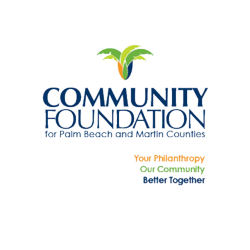Program Notes
2019-2020
CONNOISSEUR CONCERT SERIES
A Passion for Italy
This concert is dedicated to the memory of Martin L. Coyne,
Founding President
Sunday, January 5, 2020, 3 p.m.
Carolyn Kuan, Guest Conductor
Daniel Andai, Violin Soloist
PROGRAM
Suite for Lower Strings Clarice Assad
Violin Concerto in C Major Franz Joseph Haydn
Allegro moderato
Adagio
Finale. Presto
Daniel Andai, Violin Soloist
INTERMISSION
Symphony No. 4 in A major, op. 90, “Italian” Felix Mendelssohn
Allegro vivace
Andante con moto
Con moto moderato
Saltarello: Presto
PROGRAM NOTES
by Dr. Eve R. Meyer
Suite for Lower Strings
Clarice Assad (b. 1978)
Clarice Assad is an award-winning composer, pianist, arranger and singer from Rio de Janeiro. She composed her Suite for Lower Strings (2011) for the New Century Chamber Orchestra, and she was concerned that in most works the viola and cello players rarely had a chance to display their talent, so she decided to switch roles and give them the melody while the violins provided the accompaniment. The Suite is based on music from about a dozen of J. S. Bach’s best-known works such as his Brandenburg Concertos, Toccata in D minor, Jesu, Joy of Man’s Desiring, Well-Tempered Clavier, an unaccompanied cello suite, and especially Air on the G String. The themes are presented in an imaginative manner, and listeners are challenged to discover how many melodies they recognize as they are broken up into fragments, played against each other, passed from one instrument to another, or given dissonant accompaniments.
Violin Concerto in C Major
Franz Joseph Haydn (1732-1809)
Haydn was director of the orchestra at the court of Prince Esterhazy when wrote his engaging Violin Concerto in C Major for the orchestra’s concertmaster, Luigi Tomasini. Tomasini was a brilliant soloist, and Haydn’s concerto displays the performer’s many skills. The concerto is in the three-movement (F-S-F) classical style, but it is an early work, written in the 1760s, and it has elements of the Italian Baroque violin concerto. The first movement contrasts a stately opening theme with more lyrical passages, but the main emphasis is on virtuosity with wide leaps, ornamentation and double stops (playing two notes simultaneously) plus a cadenza, which Tomasini improvised near the end. The exquisite slow movement, reminiscent of the Italian serenade, features a soaring, expressive melody with a simple, mainly pizzicato, accompaniment. The finale moves at a rapid pace and presents even more technical challenges for the performer.
Symphony No. 4 in A major, op. 90, “Italian”
Felix Mendelssohn (1809-1847)
Felix Mendelssohn was an exceptional pianist, a prolific composer, a talented conductor, and also a gifted painter and poet. His parents wanted him to have a well-rounded education, and in the spring of 1829, Mendelssohn embarked on a three-year European journey—the traditional “grand tour,” which he described in his letters. In 1830 he traveled to Italy and remarked that the people, the historic cities, the great works of art, and the beautiful scenery provided the stimulation for his “Italian” Symphony, which he described as the “jolliest piece” he had ever written. It was premiered in London in 1833 with composer conducting and was a great success.
The opening theme of the first movement expresses the exuberance and excitement that Mendelssohn must have felt when he visited the magnificent cities and countryside. He wrote home: “This is Italy! What I have been looking forward to all my life as the greatest happiness is now begun, and I am basking in it.” The cheerful mood continues in the second theme, introduced by the wind instruments. In the development section, Mendelssohn presents a new theme in a fugal setting and also in combination with the principal theme. At the climax of the development, the new theme is transformed into a majestic march. A strong crescendo leads to a reprise of all the thematic material.
He said he was motivated to compose the slow movement after seeing a solemn religious procession in Naples. The opening sounds rather chant-like, and the pizzicato bass line, emphasizing the beat, creates the image of a procession. The third movement is a romanticized version of the classical minuet, and the middle section features music for horns and woodwinds in a pastoral style that anticipates the Nocturne in his incidental music to A Midsummer Night’s Dream. The finale is the only truly Italian movement. It is based on an Italian dance from the sixteenth century: the saltarello, a leaping, hopping dance with wild arm motions. The music moves at a whirling, vigorous pace. The entire symphony is skillfully orchestrated and is filled with youthful energy and engaging melodies.
*A special thanks from The Symphonia to Dr. Eve Meyer, for the incredible work she does, in a volunteer capacity, as our Program Annotator. She is professor emerita and former chair of the music history department at Temple University in Philadelphia, where she was the recipient of the University’s Great Teacher, Lindback Foundation, and Distinguished Professor Awards. She is the author of three books and numerous articles on European and American music, and she is currently the editor in chief of a professional music journal.
 Donate
Donate




















